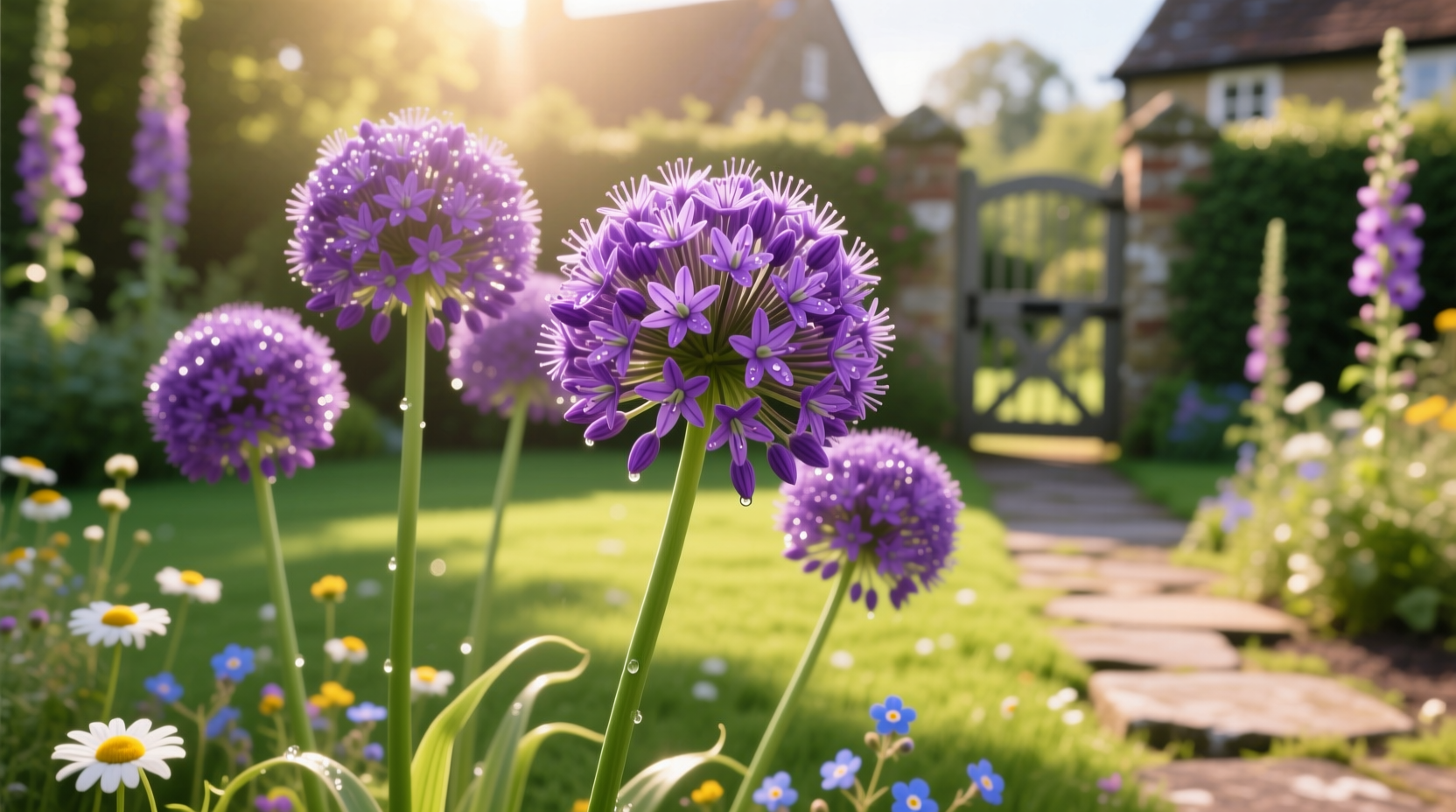Discover how to transform your garden with these architectural wonders that attract pollinators, resist deer, and provide months of visual interest. This comprehensive guide reveals proven cultivation techniques used by professional horticulturists to maximize bloom performance and longevity.
Why Flowering Onions Belong in Every Garden
These members of the Allium genus deliver unmatched structural drama with minimal effort. Unlike their culinary cousins, ornamental alliums focus energy on producing magnificent flower heads ranging from golf ball to soccer ball size. The Royal Horticultural Society recognizes over 850 allium species, with approximately 50 varieties cultivated specifically for ornamental use in temperate gardens.
"Alliums provide the perfect vertical accent in perennial borders," explains Dr. Linda Chalker-Scott, urban horticulturist at Washington State University Extension. "Their unique form creates visual rhythm while requiring virtually no maintenance once established."

Top 5 Flowering Onion Varieties Compared
| Variety | Height | Bloom Time | Hardiness Zone | Special Features |
|---|---|---|---|---|
| Allium giganteum | 4-5 ft | Early summer | 4-8 | Giant purple spheres, edible flowers |
| Allium schubertii | 18-24 in | Late spring | 5-9 | Firework-like blooms, excellent dried |
| Allium christophii | 12-18 in | Late spring | 5-9 | Silver-purple starburst flowers |
| Allium 'Purple Sensation' | 24-30 in | Mid-spring | 4-9 | Vibrant purple globes, long-lasting cut flowers |
| Allium moly | 6-12 in | Early summer | 3-9 | Golden yellow flowers, naturalizes easily |
Source: Oregon State University Extension Service Allium Cultivar Database (2024)
Your Seasonal Flowering Onion Care Timeline
Successful allium cultivation follows this predictable seasonal pattern verified by Cornell University's Gardeners' Toolkit:
- September-October: Plant bulbs 3-4 times deeper than bulb height (typically 6-8 inches) in well-draining soil. Space 6-12 inches apart depending on variety.
- November-February: Minimal care required. Mulch in zone 3-4 gardens to prevent frost heaving.
- March-April: Emerging foliage requires consistent moisture. Apply balanced fertilizer as shoots appear.
- May-June: Peak bloom period. Deadhead spent flowers if not collecting seeds. Reduce watering as foliage yellows.
- July-September: Dormant period. Avoid overwatering. Mark locations to prevent accidental digging.
Planting Success: Soil Preparation Secrets
Alliums demand excellent drainage to prevent bulb rot. The University of Minnesota Extension recommends amending heavy soils with 3-4 inches of coarse sand and compost worked to 12-inch depth. Raised beds (6-8 inches high) significantly improve success rates in clay soils.
"I've found alliums thrive in slightly alkaline conditions," shares Emma Rodriguez, culinary horticulture specialist. "When preparing planting beds, I incorporate a handful of crushed eggshells per bulb to provide calcium while gently raising pH. This simple technique has dramatically reduced my bulb rot issues in acidic soils."
Design Strategies for Maximum Impact
Professional landscape designers employ these proven techniques:
- Mass plantings: Group 7-15 bulbs of the same variety for dramatic focal points
- Succession planting: Combine early (Allium karataviense), mid (Allium 'Purple Sensation'), and late (Allium atropurpureum) bloomers for continuous interest
- Textural contrast: Pair spherical blooms with spiky grasses or feathery carrots
- Container gardening: Use large pots (18+ inches diameter) with 50% perlite in potting mix for balcony displays
Troubleshooting Common Flowering Onion Problems
Even low-maintenance alliums occasionally face challenges. These solutions come from verified extension service recommendations:
- No blooms: Often caused by insufficient chilling (most require 14+ weeks below 40°F). In warm climates, refrigerate bulbs for 8-10 weeks before planting.
- Yellowing leaves: Typically indicates overwatering during dormancy. Reduce irrigation as foliage yellows in summer.
- Poor bulb development: Apply potassium-rich fertilizer (5-10-10) in early spring to strengthen bulbs.
- Pests: Alliums naturally repel deer and rodents, but watch for onion thrips in dry conditions. Spray with insecticidal soap at first sign.
The USDA Agricultural Research Service confirms alliums contain sulfur compounds that naturally deter most garden pests, making them excellent companion plants for roses and other vulnerable specimens.
Harvesting and Using Flowering Onions
While primarily ornamental, many allium varieties offer culinary potential. The Missouri Botanical Garden verifies that Allium giganteum, Allium stipitatum, and Allium ursinum produce edible flowers and bulbs with mild onion flavor.
For best results:
- Harvest flowers just as buds begin opening for salads
- Dig bulbs in late summer when foliage has completely died back
- Store bulbs in mesh bags in cool, dark place (50-60°F)
- Divide clumps every 3-4 years to maintain vigor











 浙公网安备
33010002000092号
浙公网安备
33010002000092号 浙B2-20120091-4
浙B2-20120091-4